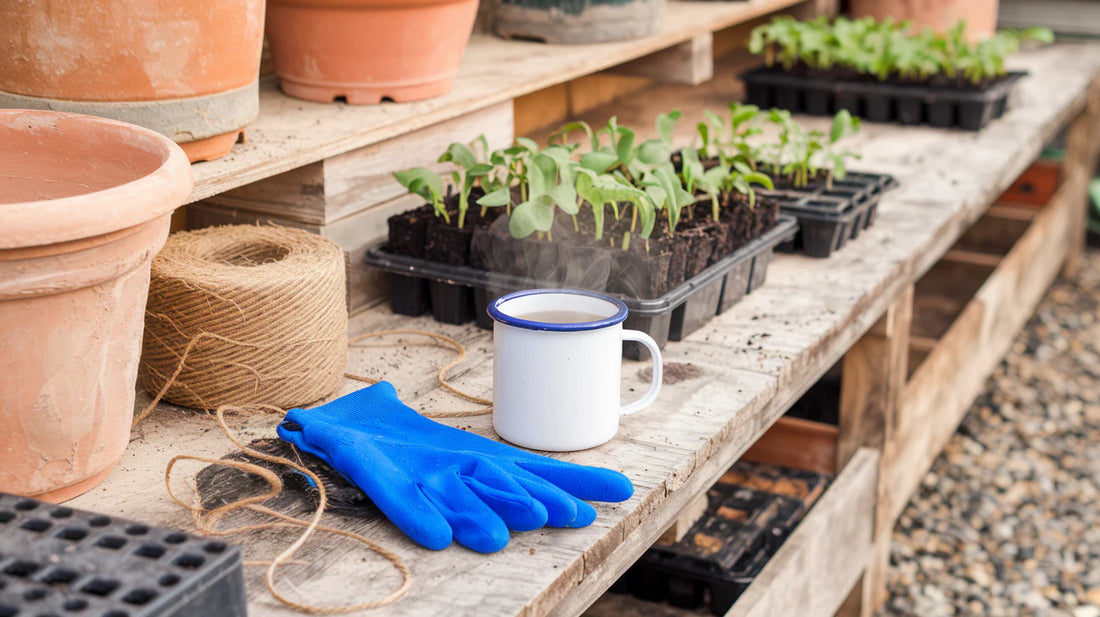
Make May the month when you really sow the seeds of success in the garden
Share
May is one of the busiest months for gardeners in the UK. The warmer weather and longer days provide ideal conditions for sowing a wide range of seeds, both indoors and outdoors. Here's a detailed guide to what you can sow on the windowsill, in a greenhouse or polytunnel, and directly outside, along with tips for transplanting earlier-sown crops.
Seeds to Sow on the WindowsillMay is a great time to sow fast-growing crops or tender vegetables that still need warmth.
-
Sweetcorn (18–24°C)
Sow in deep pots or modules to avoid root disturbance during transplanting. Germinate indoors for better success. -
Melons (21–25°C)
In the first half of the month sow in individual pots and keep in a warm, sunny spot. -
Herbs
- Basil (20–25°C): Keep in a sunny location and water sparingly.
- Coriander, Dill, and Parsley (18–20°C): Soak seeds overnight before sowing to aid germination.
Tips: Rotate seed trays daily for even growth and avoid overwatering, which can lead to damping-off disease.
Seeds to Sow in the Greenhouse or PolytunnelThe controlled environment of a greenhouse or polytunnel allows for earlier sowing of tender vegetables.
-
Courgettes & Squash (18–24°C)
Sow one seed per pot and transplant when seedlings are strong. -
Aubergines (20–25°C)
Keep in warm conditions with plenty of light. Pot on as needed. -
Lettuce (10–20°C)
Sow in trays or modules for transplanting later.
Tips: Ventilate during warm days to prevent overheating, and keep plants evenly watered to avoid stress.
Seeds to Sow Directly OutsideBy May, the soil has warmed enough for many seeds to germinate directly in the ground.
-
Carrots (12–18°C)
Sow in well-prepared, stone-free soil. Thin seedlings to avoid overcrowding. -
Beetroot (10–15°C)
Sow in rows, spacing seeds 10cm apart. Keep soil moist for uniform germination. -
Runner Beans & French Beans (15–20°C)
Sow directly outside or start in pots for transplanting. Protect from late frosts. -
Radishes (10–18°C)
Continue successional sowing every few weeks for a steady harvest. -
Spinach (10–18°C)
Sow in shallow drills, choosing bolt-resistant varieties. -
Turnips (10–20°C)
Sow thinly for tender roots. -
Squash, Pumpkins & Courgettes (18–20°C)
Sow seeds directly in well-prepared soil or under cloches for a head start. -
Cucumbers (20–25°C)
If you haven't already started your cucumbers then they can be direct sown, remember to provide some protection to help keep warmth in the soil. Avoid waterlogging.
Many crops sown earlier in the year will now be ready to move to their final growing positions.
-
Onions & Shallots
Transplant sets or seedlings to their final position, spacing them about 10cm apart. -
Brassicas (Cabbages, Broccoli, Cauliflower)
Harden off seedlings before planting outside. Use netting to protect from pests. -
Tomatoes
Move well-established seedlings to the greenhouse or outdoor beds once risk of frost has passed. -
Leeks
Transplant seedlings into dibbed holes. Space 15cm apart in rows.
-
Soil Preparation:
- Ensure soil is free of weeds and warmed up (cover with fleece or cloches if needed).
- Add compost or organic matter to improve fertility.
-
Successional Sowing:
- Sow seeds every few weeks for continuous harvests throughout the summer.
-
Pest Protection:
- Use netting to protect brassicas from cabbage white butterflies.
- Install slug barriers or use pellets around tender seedlings.
-
Frost Watch:
- May can still bring late frosts. Keep fleece or cloches handy to protect vulnerable plants.
-
Watering:
- Water consistently to prevent bolting or splitting in crops like beetroot and lettuce. Avoid watering in the heat of the day.
